3D print aquarium decor problems often begin the moment that “perfect” STL file meets real water. You downloaded a jaw-dropping shrimp cave, hit print and placed it proudly in your tank — only to find it bobbing at the surface the next morning or worse — becoming a detritus trap.
This isn’t just bad luck. It’s a widespread issue as more hobbyists dive into 3D printing for their aquariums. Many STL files are designed for visual appeal, not for underwater performance. That means wasted filament, wasted time and sometimes even a risk to your aquatic life.
Let’s dive into the real-world issues and solutions for aquarium safe 3D prints that actually work.
Common 3D Print Aquarium Decor Problems
💥 Thin Walls — Friend or Foe?
Thin walls often get a bad rap in 3D printing communities, especially when it comes to underwater decor — but they shouldn’t. In fact, when intentionally engineered, thin-walled designs can be one of your strongest tools in creating effective, aquarium safe 3D prints. They allow you to dramatically reduce filament usage, shorten print times and help the object sink without needing to crank up infill settings to 100%. That’s something I’ve learned to optimize very well when designing functional aquarium prints.
Of course, it’s not just about making everything paper-thin. The key is thoughtful application. I’ve developed many of my models with thin walls specifically where structural strength isn’t critical, then reinforced areas that take more wear or pressure — like bases or entry lips. When done right, the result is a sturdy, functional model that integrates beautifully into your aquarium setup.
Unfortunately, many STL files available online don’t get this balance right. They either default to chunky, overbuilt structures that waste material and require tons of infill, or they go too thin in the wrong areas risking breakage. So, when I talk about thin walls, I mean smart thin walls — strategically designed to serve a purpose, not just to look minimal or artistic in a slicer preview.
Bottom line? Don’t assume thicker equals better. Smarter wall design is part of designing functional & aquarium safe 3D prints — it can make all the difference between a model that fails and one that thrives in your tank.
Pro Tip: Not all designs need to be bulky. Smarter printing means smarter placement in your tank.
📏 Incorrect Scale & Entry Holes
One of the most overlooked 3D printed fish tank hide issues is improper scaling. A cave that looks perfect in a slicer or render might be completely useless or even dangerous when placed in a real aquarium. For instance, designs intended for shrimp might seem fine at first glance, but their entry holes could be just the right size for a betta to get stuck or too small for plecos to navigate. In other cases, fish may simply ignore the hide altogether if it’s scaled wrong for their comfort.
That’s why checking dimensions before printing is absolutely critical. Relying on visual appeal or aesthetic renders isn’t enough. This is particularly important with STL files that haven’t been clearly labeled or tested by someone who understands the specific behavior and size needs of aquarium species.
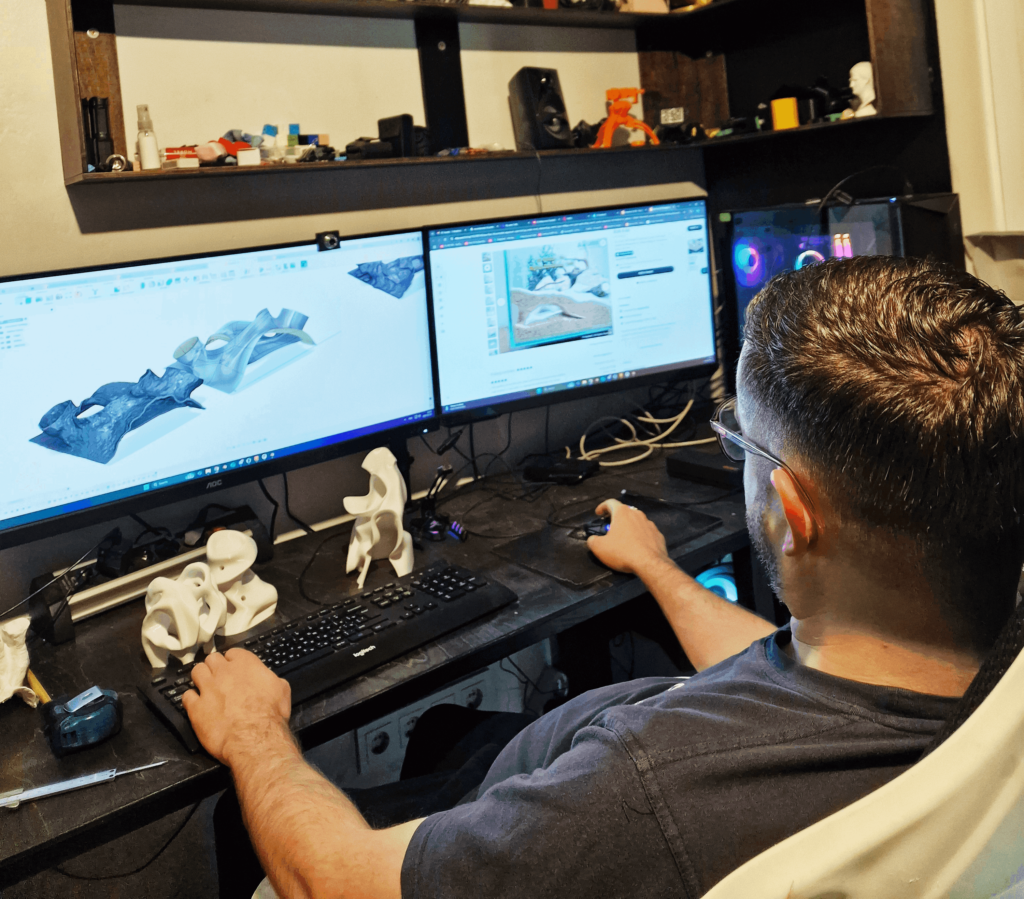
Small entry holes aren’t necessarily a design flaw. In fact, they’re often intentional. Hides with tighter openings can offer excellent refuge for shrimp or fry, allowing them to avoid harassment or predation from larger fish like bettas. But, if you’re printing for bigger species, those small holes won’t do any good and can become a stress point instead.
On the opposite end of the scale, there’s also a trend of designs with overly large, theatrical openings — sometimes 10 cm tall or more. While this might look dramatic in a render, it tends to be impractical in real aquascapes. These models often take up too much space, look unnatural underwater and require extra gravel to position correctly. If you plan to cover the cave with substrate, the gravel can slide off steep surfaces, making it hard to secure.
That’s why understanding your tank setup and inhabitants is essential. Scaling isn’t just a design detail — it’s a fundamental part of designing functional aquarium prints that fit your environment and the behavior of your fish.
Use small entries strategically for shrimp, fry or community tanks where safe retreats are vital. Always verify entry size before printing. Avoid unnecessarily massive openings unless you’re creating a centerpiece for large species.
💧 Water Flow Failures
One of the most critical 3D print aquarium decor problems is poor internal water flow. When a printed model has areas with no circulation, commonly known as dead zones, it can quickly become a magnet for detritus, lead to algae growth and cause poor oxygenation inside the structure. This is particularly problematic in designs that are fully enclosed or feature only a single small entry point.
These kinds of designs might look sleek or minimal in a slicer preview, but they often fail to function properly in real aquatic environments. Stagnant zones can develop, especially in low-flow tanks and while most fish are smart enough to avoid areas with low oxygen, it’s still a poor design practice that can put stress on your aquarium ecosystem.
Best Practice: When creating or choosing aquarium safe 3D prints, go for models with at least two entry points or some form of passive ventilation that allows for basic water movement through the structure. This doesn’t have to be elaborate — a simple channel or opposing holes can make a big difference.
Also, keep in mind that not every 3D printed hide is meant for aquarium use. In recent months, I’ve seen more terrarium enthusiasts using these designs. Some of my own models are intentionally created for dry environments, where water flow isn’t a concern. That’s why it’s important to confirm the intended application — designing functional aquarium prints means accounting for how water behaves, not just how the model looks.
🧹 Cleaning Headaches
One concern I hear often about aquarium safe 3D prints is whether intricate designs are difficult to clean. While it’s a fair question, the reality is more straightforward than most people expect. Complex shapes aren’t inherently harder to clean — as long as you’re using the right material and finish. For example, PETG with a decent surface layer prints smoothly enough that algae and debris don’t cling excessively. A simple soak in hydrogen peroxide or citric acid, followed by a rinse, is usually all it takes to keep things clean.
Read more: why I consider PETG the best 3D print material for aquariums here & here.
That said, cleaning becomes even less of an issue in a healthy, well-balanced tank. If you’re running a “cleanup crew” like bristlenose plecos or other algae grazers — they’ll do most of the work for you. I’ve had caves running for over a year without needing manual cleaning, simply because the tank’s ecosystem takes care of it.
Another design tip I follow when designing functional aquarium prints is to ensure that many of my models are easy to remove and reposition. Some are made to sit just slightly buried in the gravel, which makes it easier to take them out if they ever do need a rinse. Others are self-standing with wide bases for simple placement. So, if you’re having ongoing issues with cleaning your decor, it might be less about the model and more about your tank’s overall balance.
In short: the right material, thoughtful design and a stable tank environment go a long way in eliminating cleaning headaches.
Aquarium Safe 3D Prints: Spotting Red Flags Before Purchase
When browsing STL files, especially from online marketplaces or shops, it’s important to look beyond the flashy renders. A major source of 3D print aquarium decor problems comes from downloading files that were never actually tested in a real tank. Here are a few red flags that can help you avoid disappointment:
- Listings that show only polished 3D renders, without any photos of the model in an actual aquarium or terrarium. This usually means the designer hasn’t tested how it performs in a real setup.
- Shops that offer a random mix of items—keychains, figurines, fantasy statues and then suddenly a shrimp cave, fish grotto or reptile hide. This lack of focus suggests they’re not committed to designing functional aquarium prints.
- STL files that look nearly identical to popular models but with minor tweaks. This can indicate the seller is simply copying others’ work without understanding the purpose or function behind the design.
When sellers don’t specialize in aquarium-safe decor, there’s a good chance the models haven’t been tested for real-world use. Without understanding how materials like PETG or PLA behave underwater or how different fish species interact with objects, it’s impossible to ensure the model is truly safe and effective.
To avoid aquarium safe 3D prints that end up being useless or worse — harmful — stick to designers who focus on aquatic use and can show proof that their models have been placed in real tanks.
Ever wondered, is there a real difference between free and paid STL designs? I’ve got this covered in the topic Free vs. Paid STL Files — Are You Saving Money or Wasting Time?
How I Guarantee Aquarium Safe 3D Prints
I never release a model based solely on a slicer view or CAD preview. Every single one of my designs is physically tested in actual aquariums or terrariums to ensure it’s both functional and safe. This hands-on testing process allows me to spot issues that renders simply can’t reveal — things like water stagnation, fish access or how easily a model collects detritus.
When I say a design is aquarium-safe, that means it’s been vetted for:
- Proper access for the intended species, without risk of entrapment or injury
- Internal water flow to avoid dead spots
- Easy positioning and removal in real tank environments
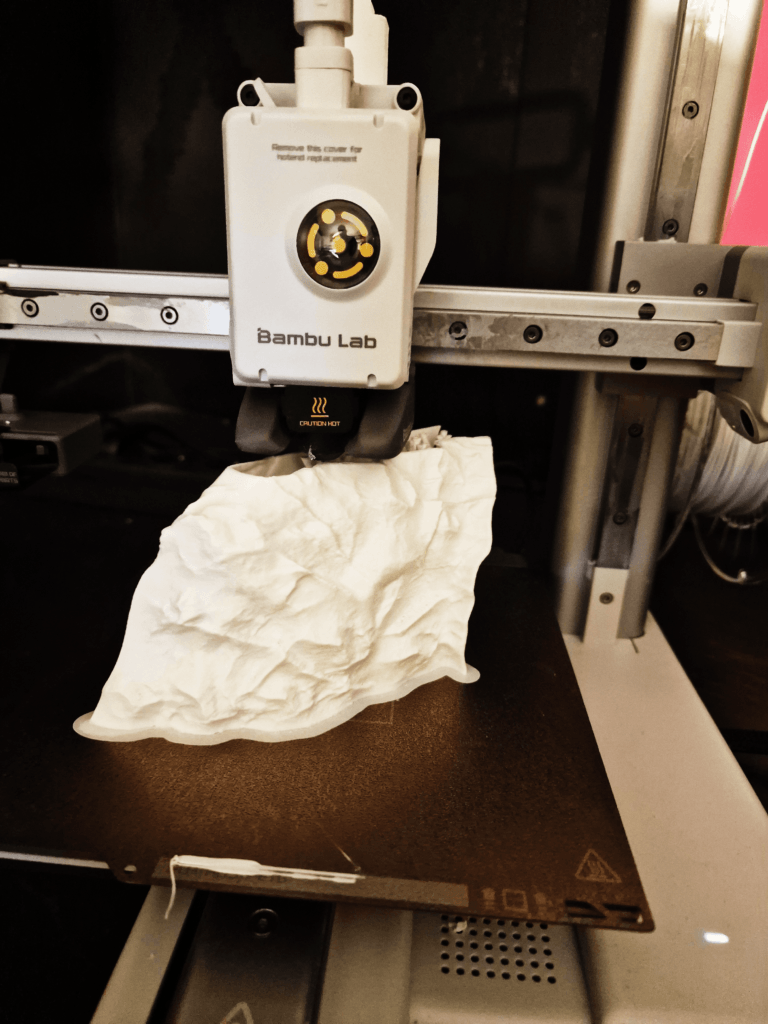
Over the past few years, I’ve created more than 100 unique STL designs and sold over 1000 physical prints globally. That experience has taught me exactly what separates functional, fish-friendly models from the ones that cause more problems than they solve. I’ve seen which shapes hold up, which materials behave best underwater and what types of structures fish actually use.
My “Safe to Print” Standards:
To ensure that each model can be considered among the safe aquarium 3D prints, I follow a strict design protocol:
- Minimum wall thickness of 2.2 mm where strength is essential;
- Flow-through or dual-entry shapes to allow for proper circulation;
- Optimized for printing with PETG.
Not all of my models are strictly aquarium-focused — some are created with terrarium use in mind. These prioritize animal access and aesthetics rather than water flow. I’m always clear about this in product descriptions, so hobbyists can print with confidence.
Lastly, I rely on community feedback to keep improving. Whether it’s photos from users, or suggestions for tweaks — I encourage anyone, who uses my models, to share the results. That feedback loop helps me design better and helps you avoid failed prints or unsafe decor.
Designing Functional Aquarium Prints That Look Amazing
One of the biggest misconceptions in 3D printing for aquariums is that functional means boring. But that couldn’t be further from the truth. When done right, designing functional aquarium prints is a creative opportunity — one that lets you craft visually exciting decor that serves a clear purpose in your aquatic or terrarium environment. Some of my own design examples prove this point clearly.
The 🧬 Gyroid Shrimp Hides feature organic, porous surfaces with perfect dimensions for shrimp to explore, rest and stay out of reach from larger fish. These models support both function and aesthetics, with a unique structure that encourages natural behavior.

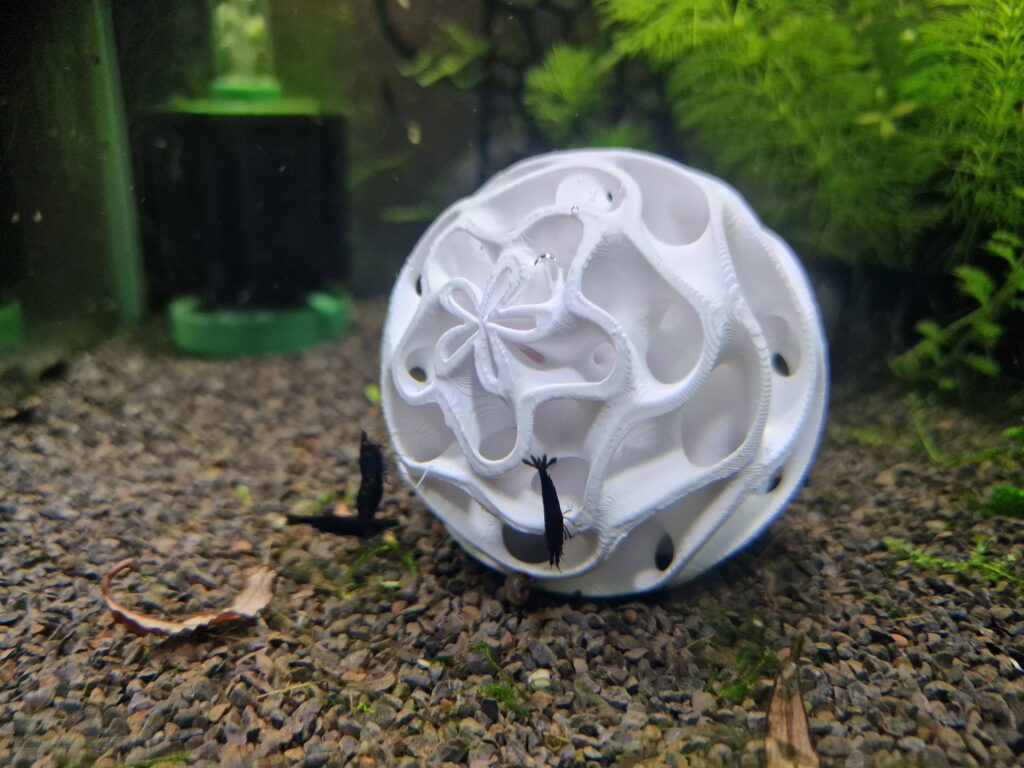
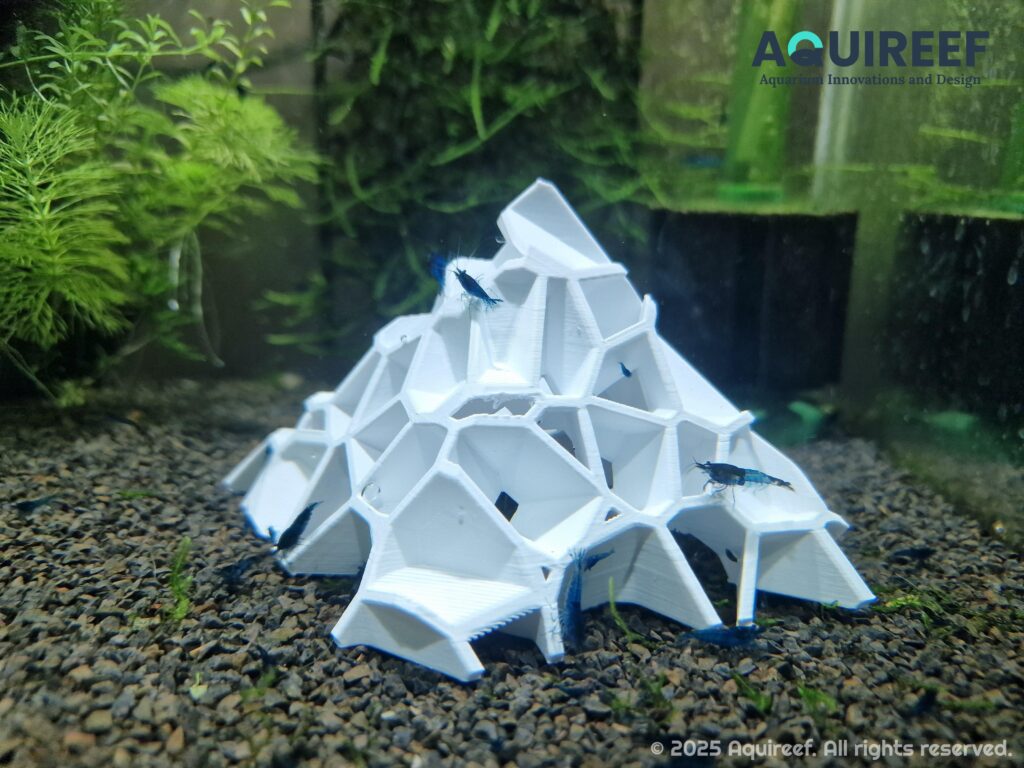
Then there are the 🌊 Betta Resting Caves, made for species that enjoy calm spots near the water surface — bettas, gouramis and even some killifish. The shape is shallow and accessible, offering gentle shelter without interfering with their air-breathing behavior.
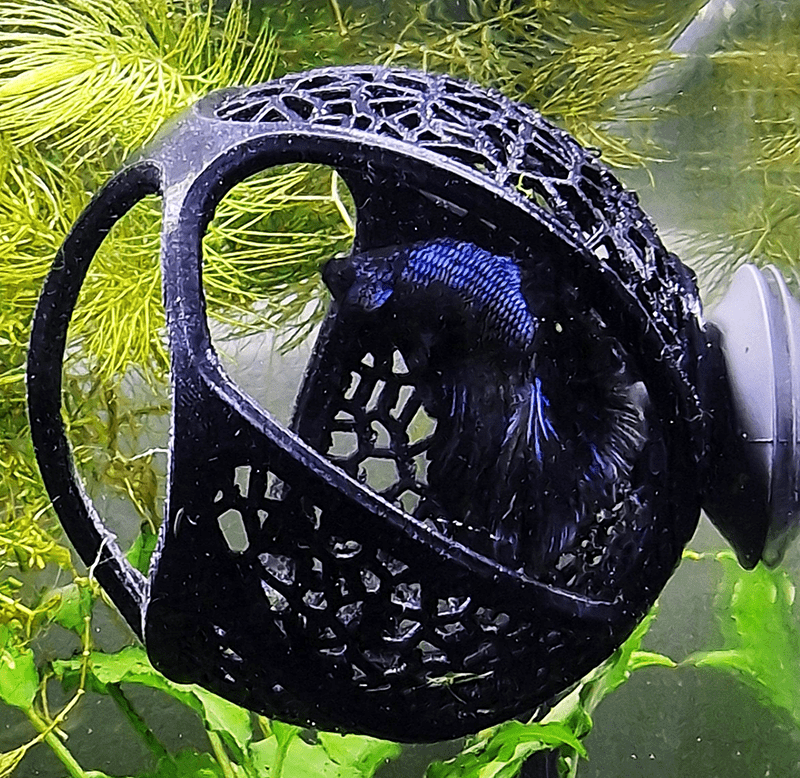
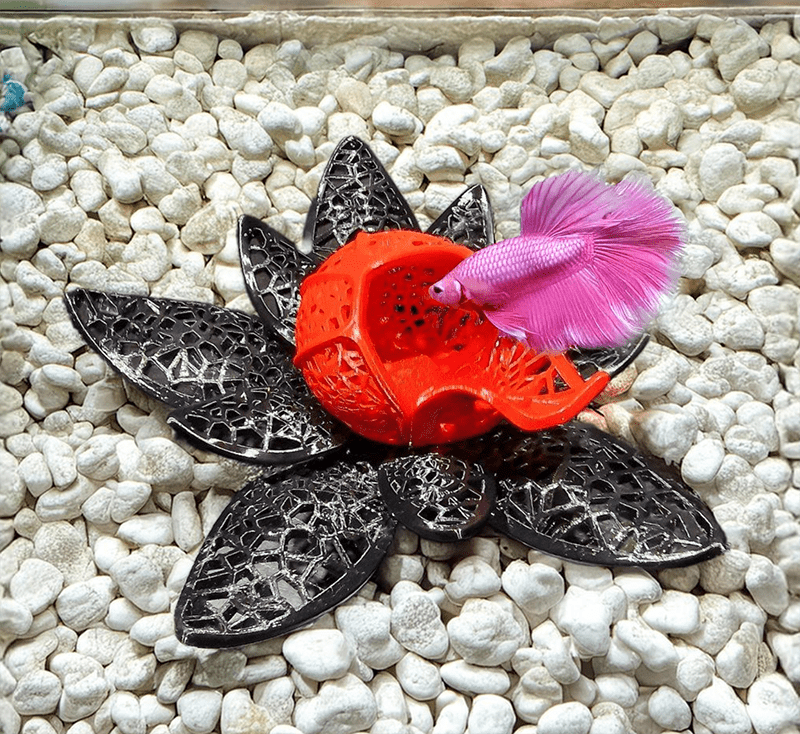
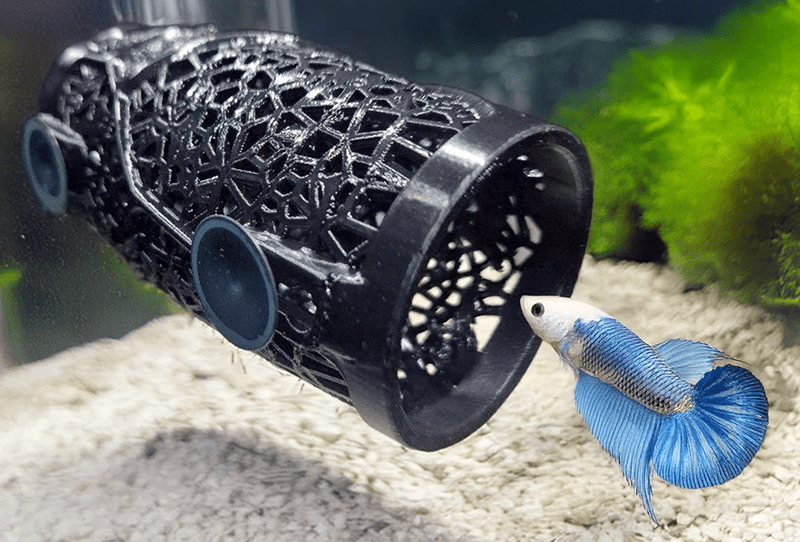
Finally, the 🏛️ Atlantis Catacombs Cave (and similar types) is the true all-rounder. Designed with bottom dwellers in mind, it’s perfect for plecos, catfish, loaches and similar species. And when scaled up, it’s easily big enough for reptiles, lizards, geckos, smaller snakes or even axolotls — depending on your tank or terrarium size. It’s a model that bridges aquarium and terrarium use while keeping flow, access and safety at the core.
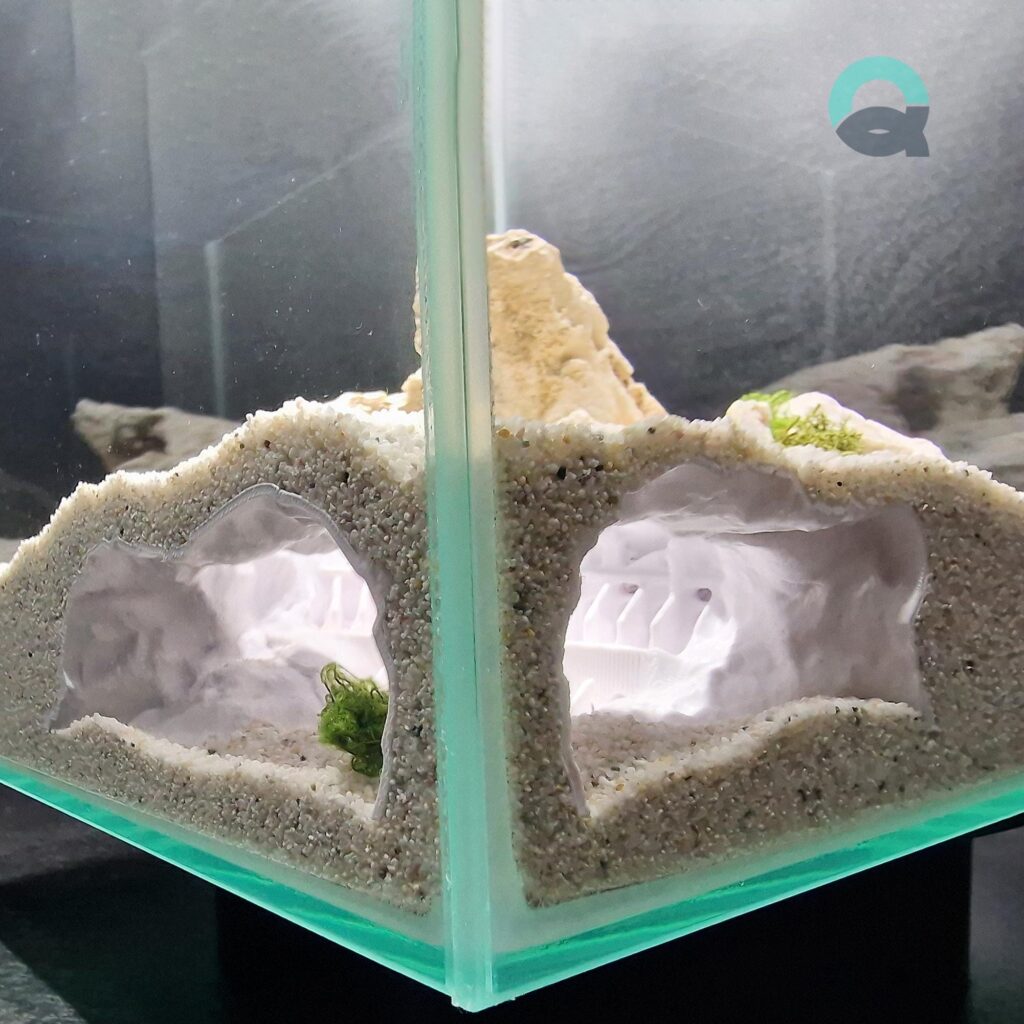
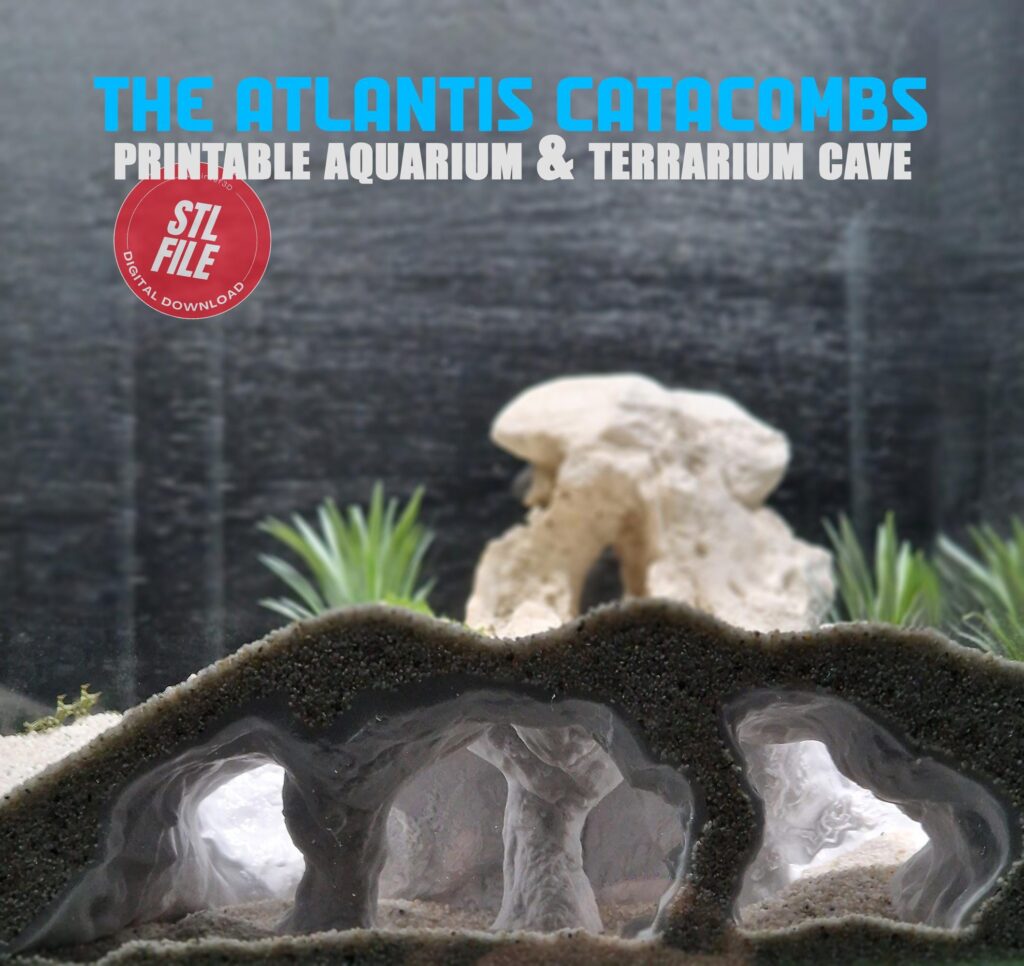
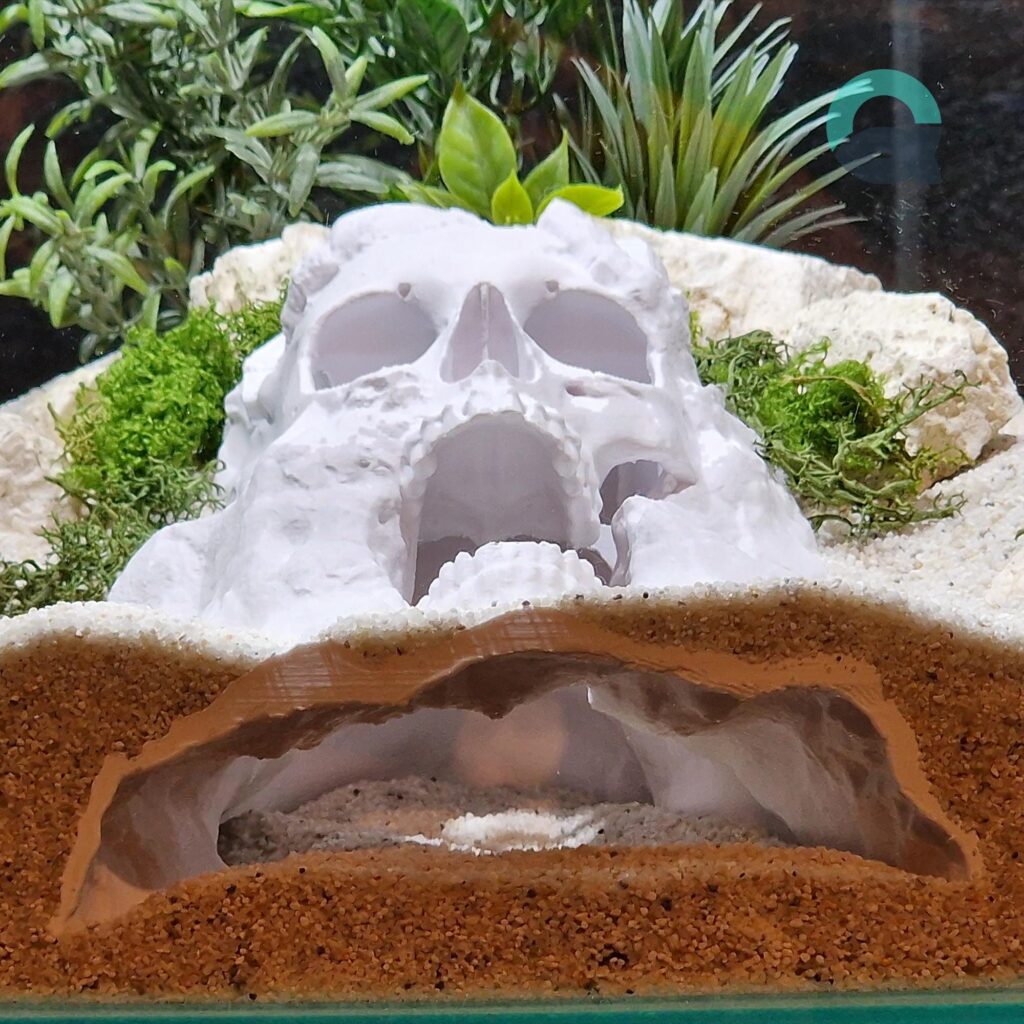
These aren’t just flashy designs that look good on pictures — they’re tested, functional and shaped by real feedback and experience. That’s the essence of aquarium safe 3D prints: they don’t just hold up underwater — they help your animals thrive.h visually and biologically.
Final Check: Safety First
In the end — you are the most responsible person in your aquarium. Before placing any 3D print into your aquarium, it’s essential to give it a quick but thorough check. A few extra minutes here can prevent a host of potential 3D print aquarium decor problems later on.
- Lightly sand any sharp edges or corners that could harm curious fish.
- Look closely for thin points, rough surfaces or weak layer adhesion — especially if printing with lower infill.
- Double-check entry sizes to make sure they’re appropriate for your specific tank habitats.
While most fish aren’t as delicate as people think, poorly designed or unfinished decor can still pose risks. I’ve personally had more cuts from natural rock or driftwood than from any printed cave — but that doesn’t mean you should skip this step. A quick sanding or a slight scale adjustment can turn a decent model into one that’s truly aquarium safe 3D prints approved.
Above all, keep your species in mind. What works for shrimp might not work for plecos. Every aquarium is different and designing functional aquarium prints means tailoring them to your own tank’s needs.
👉 Got a story about a 3D print that worked or failed in your tank? Share your best and worst aquarium or terrarium decor design practices in the comments. And while you’re here, check out my other posts for more insights while waiting for the next article!
- Is 3D Printing Food Safe? Here’s the Real Truth
- 3D Printed Reptile Hides Exposed: Crucial for Welfare or Just Terrarium Decor Hype?
- 3D Print Bed Adhesion — What Works Best To Avoid Failed 3D Print?
- Are Aquarium Caves Really Critical for Fish and Shrimp Health? Does 3D Print Decor make a Difference for your Aquatic Pets?
- Why Aquarium Plant Holders Are Changing the Game for Tree Lovers
